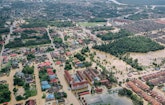Stormwater monitoring can be challenging. With what seems like endless variables and situations impacting data, documenting and calculating stormwater isn’t as simple as putting a rain gauge on your garden post.
In a recent webinar presented by Xylem, Dr. Stephanie Smith...









